DocZ
Chameleon Enthusiast
I’ve had Calcifer for about two months. I’ve learned a great deal from all of you and other resources about how best to care for him. This is the first chameleon cage I’ve done in 25 years, so it’s been two months I’ve tinkered and changed some things how does all of this look? Thanks ?
Chameleon Info:
Chameleon Info:
- Your Chameleon - Calcifer is a 5 month-old, male Amilobe panther chameleon, and he’s been with us for about 2 months
- Handling - He prefers I don’t even look at him.
- Feeding - Calcifer is fed some combination of banded crickets, silkworms, Dubias, discoids, and occasional superworms. About 6-8 daily total in a couple of feedings. Gut loading with dandelion greens, alfalfa sprouts, acorn and butternut squash, carrots, bell peppers, chorella and spirulina powder, and bee pollen
- Supplements - Daily with Zoomed calcium without D3, seventh day alternates between repashy LoD and Herptivite
- Watering - Mistking 2 minutes twice overnight and once for two minutes just after the lights come on. A fogger runs overnight as well. An automatic dripper runs 4 times for 5 minutes each day. I have seen him drinking from the automatic dripper
- Fecal Description - Brown well formed feces with slightly yellow/white urates. He has not had a fecal float done
- History - Any previous information about your cham that might be useful to others when trying to help you.
- Cage Type - He lives in a Tall screen Dragonstrand cage 2x2x4
- Lighting - Zoomed reptisun 24” UVB/LED with a Zoomed 5.0, 60W incandescent in a dual dome, and 2 reptisun LEDs. The basking bulb ramps up from 7-8AM then the rest of the lights come on at 8am. Off at 8PM.
- Temperature - Basking branch is set to 83.5. This creates about 85-86 a few inches above his branch. The range goes from mid to high 80s at the ceiling to 72-73 at the bottom during the day. Overnight lows can be 63-66. There’s a digital thermometer in the cage, the basking spot is regulated by a Herpstat 2, and I have a temp gun to dial in the maximum cage temps.
- Humidity - Humidity is 45-50% during the day. Up to 80-90% at night. Daytime humidity is maintained by the plants I suppose. Nighttime humidity is raised with misting and a fogger. There is a hygrometer and herpstat hygrostat in the cage.
- Plants - Mostly live. There’s pothos, pilea, syngonium, and aglaonema. There’s a couple of plastic plants in there to cover some ugly spots, and one that hides Calcifer’s favorite sleeping and hiding spot
- Placement - It’s in the basement, the closest vents are closed. The top of the cage is a little over 6 feet off the ground.
- Location - Omaha, NE
Attachments
-
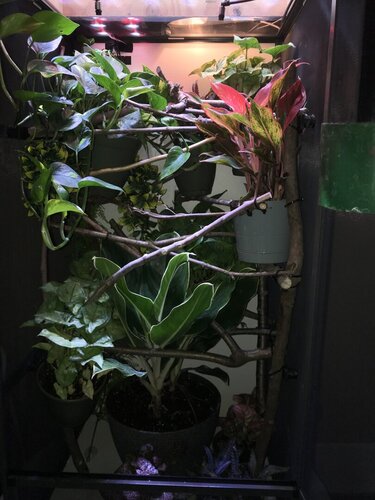 B3A9410C-FA9C-4C0A-BE43-176C6D03BD4D.jpeg153.1 KB · Views: 146
B3A9410C-FA9C-4C0A-BE43-176C6D03BD4D.jpeg153.1 KB · Views: 146 -
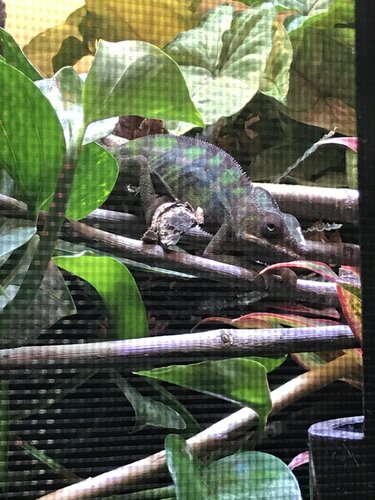 64C864BB-043F-4BEB-8818-598F91009745.jpeg195.6 KB · Views: 144
64C864BB-043F-4BEB-8818-598F91009745.jpeg195.6 KB · Views: 144 -
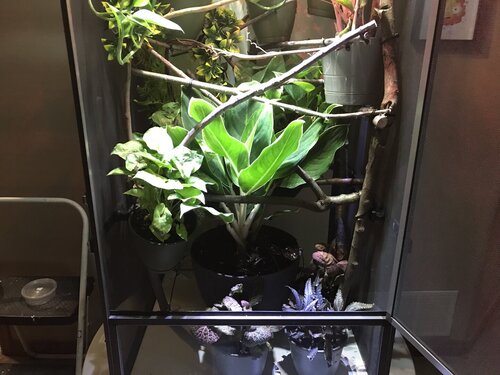 A513AAA9-457B-4C5F-BD39-F9A49BB008F7.jpeg318.3 KB · Views: 160
A513AAA9-457B-4C5F-BD39-F9A49BB008F7.jpeg318.3 KB · Views: 160 -
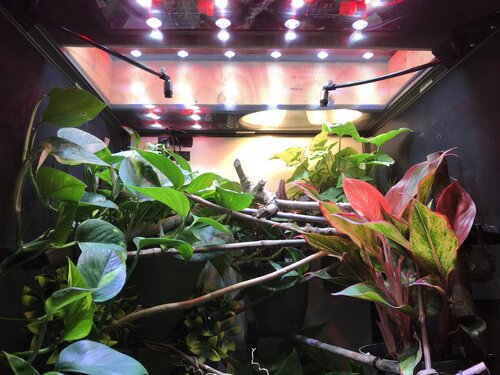 FC212031-8A9E-48C8-A90F-9F7D4EE3C096.jpeg329 KB · Views: 138
FC212031-8A9E-48C8-A90F-9F7D4EE3C096.jpeg329 KB · Views: 138 -
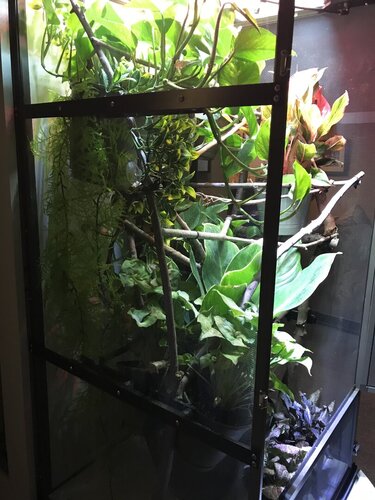 686C7CC6-A6B2-4F12-AD41-7C6A7DAC1FD1.jpeg194.9 KB · Views: 143
686C7CC6-A6B2-4F12-AD41-7C6A7DAC1FD1.jpeg194.9 KB · Views: 143 -
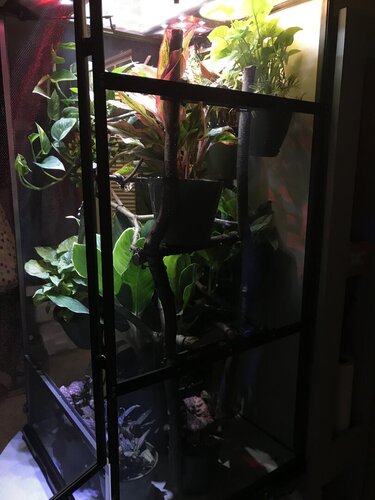 CDAE78D5-8DF1-42BB-B9D7-93E3819C4F21.jpeg143.2 KB · Views: 155
CDAE78D5-8DF1-42BB-B9D7-93E3819C4F21.jpeg143.2 KB · Views: 155 -
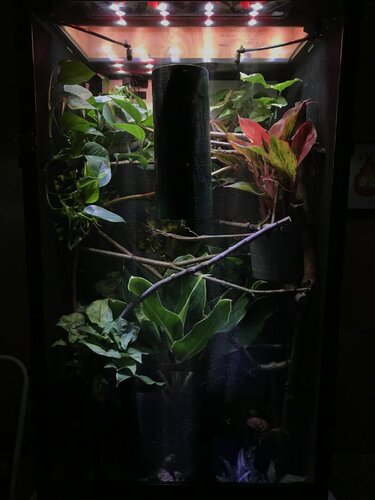 0BBB3D08-D5F3-4784-9636-37DE3A21F06D.jpeg134.3 KB · Views: 129
0BBB3D08-D5F3-4784-9636-37DE3A21F06D.jpeg134.3 KB · Views: 129





